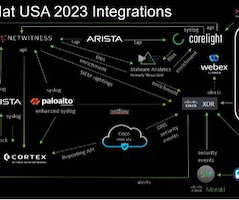Winnti APT group uses skip-2.0 malware to control Microsoft SQL Servers
Security Affairs
OCTOBER 21, 2019
The Winnti group was first spotted by Kaspersky in 2013, according to the researchers the gang has been active since 2007. malware was used by threat actors to establish a backdoor in MSSQL Server 11 and 12 servers, allowing them to access to any account on the server using a “magic password.” The skip-2.0












Let's personalize your content